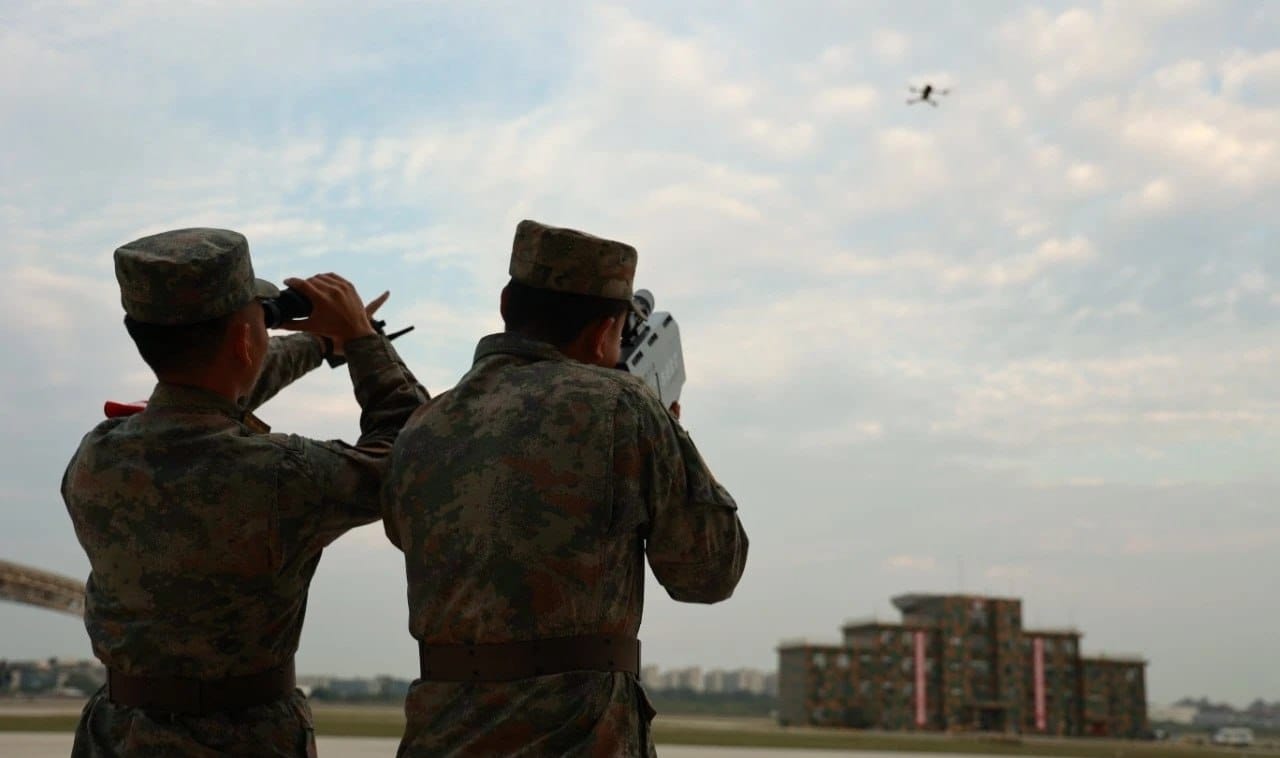As per reports in the media, one of the Indian Air Force’s top officials stated that drone strikes have emerged as a big threat to military facilities.
Air Commodore Shekhar Yadav, the Air Officer Commanding of the Air Force Station (AFS), Pune, shared troubles regarding operations as a joint user airfield, drone flying, concerns related to bird strikes, and security of the critical defense bases, IndianExpress reported.
“With the proliferation of many small models of drones…there is an increased risk to aircraft, more so in the vicinity of the airfield areas. Additionally, drone strikes have emerged as major threats to military installations and must be detected early enough to protect assets and troops. Flying bases and areas up to three kilometers of radius are a ‘no drone zone.’ To address this, the Air Force has installed counter-drone systems at its bases which involve soft kill as well as hard kill on unidentified flying objects,” the officer said.
Earlier, former Air Marshal of the Indian Air Force and DG of CAPS India, Anil Chopra, writing for EurAsian Times, said that cross-border terrorism from Pakistan has been a scourge for India for many decades now.
However, the new phenomenon is the use of drones for cross-border intrusions. In the last three years, drone sightings across the international border have increased considerably.
Of the nearly 500 sightings, over 300 were in the year 2022 itself, an exponential increase from previous years. About 75 percent were in the Punjab sector, 15 percent were in Jammu, and 10 percent were in Rajasthan and Gujarat.
India’s Line of Control (LoC) and International Border (IB) with Pakistan are well-fenced, surveyed, and manned. Yet Pakistani state and non-state players are upping the ante and using technology to smuggle illegal arms, ammunition, drugs, currency, propaganda pamphlets, and other items to their supporters and operatives.
Drones are cheap and available commercially off-the-shelf and have replaced human smugglers and even terrorists in some cases, as was the case in the Jammu airfield attack a few years ago.
The US has been extensively using drone strikes against targets as part of the ‘War on Terror.’ Drones have even been used for assassination. Ayman al-Zawahiri, al-Qaeda leader, was killed in a US drone strike in early August 2022. On January 3, 2020, Qasem Soleimani, an Iranian major general, was killed by a US drone strike at Baghdad International Airport.
A significant terror plot by Pakistan’s ISI was averted by the Special Operations Group (SOG) and Jammu police after they recovered a consignment of arms and ammunition dropped by a Pakistani drone along the IB in the RS Pura Sector in Jammu district in February 2022. The future is unmanned on many counts, including use for terrorism.
An unmanned combat aerial vehicle (UCAV) can carry ordnance such as rockets, missiles, and bombs. Small bomb-laden drones can make a Kamikaze attack.
Till recently, most drones were usually under real-time human control. However, Artificial Intelligence (AI) technology now supports more significant flight and decision-making autonomy levels.
Notwithstanding the sporadic successes of shooting down a few intruding Pakistani drones, it must be understood that the initiative of timing and place is with the aggressor.
Considering that India’s border with Pakistan and China is large, we have to be selective in providing anti-drone means to the border guarding forces.
Also, human intelligence (HUMINT) and other means must support anti-drone actions. Indian Army and BSF are acquiring large numbers of drones, some of which could be used for surveillance of borders to identify incursions timely. It all requires inter-agency coordination in India.
The BSF conducts round-the-clock surveillance through patrolling, checkpoints, and observation posts. Floodlighting of the fence enhances visibility during the night. India has invested in radars for detection.
Indian security forces also use drones for anti-drone operations. BSF has installed anti-drone systems using integrated surveillance technology equipped with cameras, sensors, and alarms with a command-and-control system at more sensitive points on the Punjab border.
They have also created ‘drone hunting teams’ to shoot down enemy UAVs. The success rate in downing drones is going up. BSF conducts awareness campaigns among the public in border areas to sensitize them about UAVs/drones. With many drone start-ups in India, anti-drone systems can be acquired easily in more significant numbers.
Way Ahead For India
Pakistan’s support of radical Islamic elements and the technological backing of China enhances the terror threat pan-India that sees the risk of drones being used for more lethal chemical or biological forms of terrorism.
The Indian government is giving the drone ecosystem in India a very high priority. India must promote more research and development in drones and unmanned systems to remain globally relevant.
As India becomes drone-friendly, there is a need to strengthen regulation and control over drones. Air defense procedures have to be evolved. More no-fly zones may be designated to make vital installations safer.

Sensors and weapons against drones would one day be integrated like the IAF’s Integrated Air Command and Control System (IACCS). Inter-ministerial coordination would be significant with the proliferation of drones within the country.
Local police and the Intelligence Bureau (IB) must monitor drones more closely. The police and security personnel should be educated and trained to respond to drone transgressions.
India has to prepare to take on drone swarms. An anti-drone force may be created one day. The national drone policy would need continuous evolvement, using global interactions and inputs. To counter the risk of embedded malware in drone electronic sensors, there is a need for greater indigenization of both platforms and sensors.
Drones are the future, and India must follow a facilitative proactive approach yet be conscious of security implications and prepare for it.
- Air Marshal Anil Chopra (Retired) is an Indian Air Force veteran fighter test pilot and is the Center for Air Power Studies Director-General in New Delhi. He has been decorated with gallantry and distinguished service medals while serving in the IAF for 40 years. He tweets @Chopsyturvey
- Follow EurAsian Times on Google News




